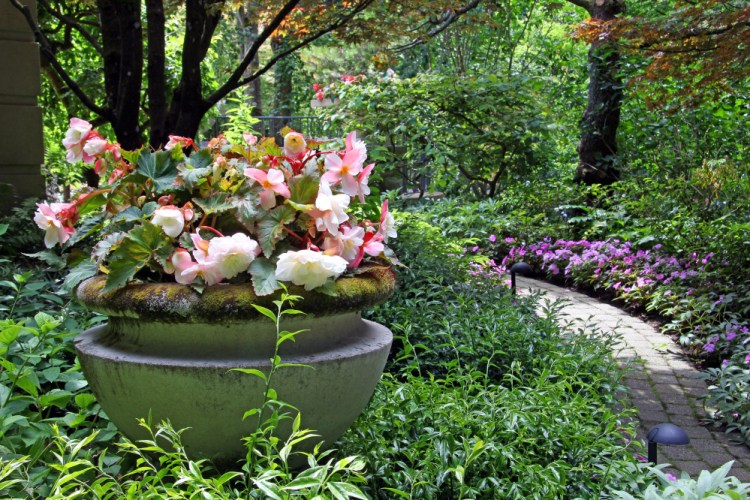People who love flowers more than they love plants have to plant annuals.
Yes, perennials can live forever and you only need to plant them once, but most are in blossom for only a few weeks a year. Annuals can bloom for several months.
A prime reasons to grow annuals is for cut flowers – although my wife Nancy pointed out when I said I was writing this that perennials also make good cut flowers. While I know some people who prefer to leave their flowers outside, Nancy and I love bringing them inside so we can enjoy their colors while we are dining, chatting, typing or doing such mundane chores as vacuuming. You are working away, see a bouquet and smile, no matter what.
Stock is one of the showiest cut flowers, with full spikes of purple, red, pink, red or white blooms that smell a little like cloves. Because stock likes cooler temperatures, it does particularly well in Maine’s coastal climate.
Zinnia has been a favorite cut flower for generations – and they come in so many configurations that it is tough to believe that they are all the same species. They can be one to eight feet tall; with double or single flowers; and spider, daisy or ball-shaped flowers. But one thing they all have in common is that they can be planted directly into the garden, sprout quickly and produce blossoms within a couple of months. And butterflies love them.
Larkspur has large, spiky blossoms similar to the perennial delphinium, and it comes in an almost true blue, which is a difficult color to find. It, too, can be planted directly in the garden and, if you let some of the plants go to seed, they will seed themselves and, possibly, come back next year.
Nancy and I have an ongoing debate about feverfew. She considers it a wonderful self-seeding annual whose small daisy-shaped flowers serve as great fillers in the flower arrangements she likes to put around the house. I consider it an attractive weed. I like it, but sometimes complain that the space it takes up could better be used for vegetables.
Feverfew is actually an herb that has been used for generations to treat headaches, arthritis and, as its name implies, fever. It is easy to grow in full sun, and if you plant it once you will never have to plant it again.
Snapdragons are actually a Zone 8 perennial, but they are treated like annuals in Maine. They grow 12 to 18 inches tall, although you can find shorter dwarf varieties, come in the rainbow of colors and have spiky blossoms that bloom from the bottom of the stalk up.
Bachelor buttons are a shorter flower that comes in white, pink and burgundy – but the most striking color is a cornflower blue. The small flowers are the perfect size to put in buttonhole, which is probably how the plant got its name.
The annuals I’ve just mentioned are good both for flower bouquets and in the garden. The plants I’m about to name are used mostly for their outside display.
Impatiens is a classic annual that provides bright colors including white, pink, red, purple, yellow and orange in dense shade. A few years ago a disease called impatiens downy mildew was predicted to wipe out this cottage-garden favorite for a growing season. Fortunately, downy mildew doesn’t seem to be a continuing problem for impatiens so, if you want a ground-level burst of color in a shady location, plant impatiens. If you have a slightly sunnier location and want a larger flower, go with New Guinea impatiens or SunPatiens, which is a cross between regular impatiens and New Guinea impatiens. The blooms are larger, as are the plants themselves.
My favorite ground-level annual, though, is the begonia – especially the Non-Stop series of tuberous begonias. They come in red, white, pink, orange and yellow and bloom non-stop from June until the first frost. They will grow in shade and almost full sun, and also do well in pots. And while they aren’t truly flower for cutting, their huge blooms, usually three inches across, can be floated in a shallow bowl of water.
We can always use a bit more beauty in our lives and in our houses.
Tom Atwell is a freelance writer living and gardening in Cape Elizabeth. He can be contacted at 767-2297 or at: tomatwell@me.com.
Send questions/comments to the editors.


